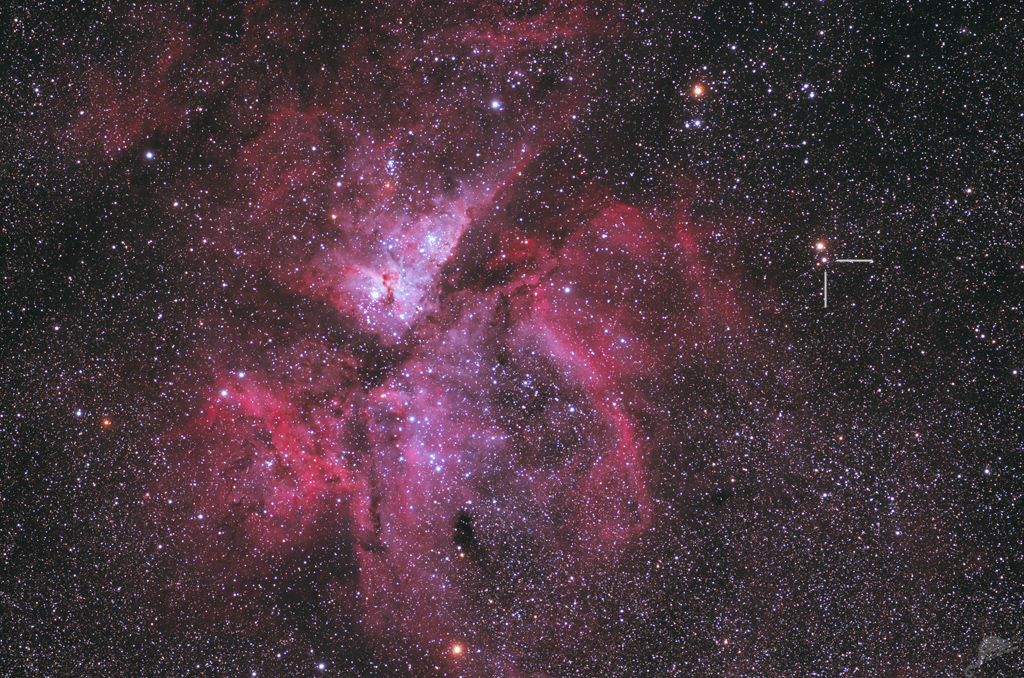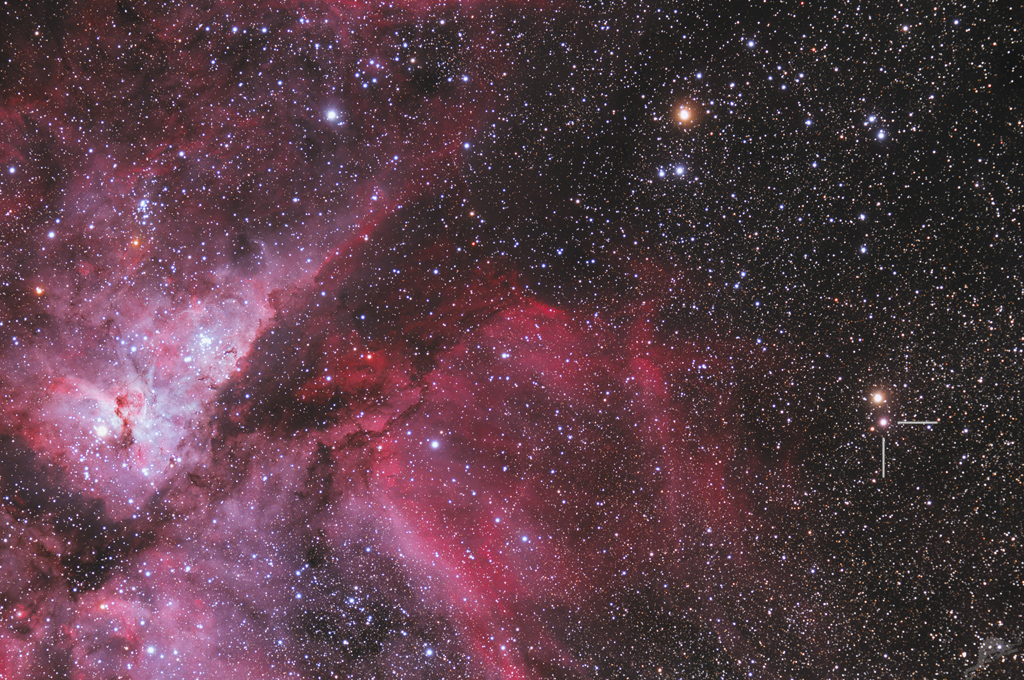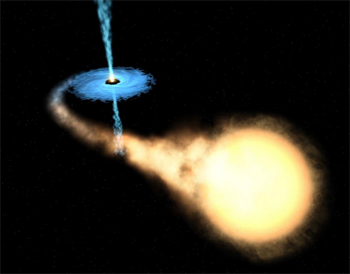 |
CHAMÄLEON + ONJALA OBSERVATORY DeepSky | SITEMAP HOME CHAMÄLEON |
|
 |
|||

Load higher resolution without Nova labeling 1800 x 1200 Pixel — Load higher resolution with Nova labeling 1800 x 1200 Pixel

Load higher resolution without Nova labeling 1800 x 1200 Pixel — Load higher resolution with Nova labeling 1800 x 1200 Pixel

Load higher resolution without Nova labeling 1800 x 1200 Pixel — Load higher resolution with Nova labeling 1800 x 1200 Pixel

Nova Carinaon May 2019 — load large image with Nova labeling 1400 x 1200 Pixel
The Nova Carinae was discovered on images taken on 20 March 2018 with a telescope of the project "All Sky Automated Survey for SuperNovae" (ASAS-SN). ASAS is a system of several automated, web-controlled telescopes distributed all over the world, so that the sky can be monitored from both the northern and southern hemispheres. The system is mainly used to search for novae, supernovae and other events where astronomical objects change their brightness within a short time.
At the time of discovery, the brightness of the Nova was brighter than 10th magnitude. The star is positioned just west of the large Carina star formation area NGC 3372 and directly south of the star HD 92 063 of the 5th magnitude. The celestial coordinates of the Nova (epoch J 2000) are: Rectacension: 10h 36m 13.7s, Declination: -59° 35´55".
We were very lucky that one of us (Paech) was in Namibia from March 21 to April 20. Despite the still prevailing rainy season, some good pictures of the Nova Carinae could be taken on two clear nights.
 |
A Nova
is an explosive brightness and radiation outburst in a narrow double star
system. The trigger is typically a thermonuclear explosion on the surface of a
white dwarf star which accumulates matter from an accompanying star in an
accretion disk due to its high gravitational pull (see
images left, source Wikipedia). Details of such outbreaks are still
largely unclear. The brightness of such an event increases millions of times
over within a few days. The term nova is derived from the Latin "stella nova" (new star) and goes back to the name of an observation of a Tychonic star coined by Tycho Brahe in 1572. It refers to the sudden appearance of a previously invisible star-like object in the sky. Until the middle of the 20th century, the term nova was used to describe every type of brightness eruption from a star with an increase to the maximum in a period of days to years and a return to resting brightness within weeks to decades. Today, many different new phenomena are distinguished, for example: Hypernovae, red novae, x-ray novae, dwarf novae and many more. |
What exactly triggered the increase in brightness will only become apparent later on. Images of the position before the eruption of the GAIA satellite show a star of the 20th magnitude. On 21 March the brightness had already risen to the 6.5 magnitude.
When we return to Onjala in July 2018, it will be exciting to see the Nova region again. Perhaps by then professional astronomers will have clarified whether it is a classic Nova or a far more exotic event.
 |
 |
Recordings of the Nova Carinae on 30 July
2018 Image data: 30. Juli 2018, 8 x 600 Seconds with the 5" EDFS, Canon EOS 700 DA, cooled. Load large images: 1800 x 1200 Pixel with Nova labeling 1800 x 1200 Pixel without Nova labeling Animation 800 x 800 Pixel Animation 400 x 400 Pixel |
 |
 |
Images Nova Carinae on 04. May 2019 Image data: 04. Mai 2019, 6 x 600 Seconds with 5" EDFS, Canon EOS 60 DA Load large images: 1024 x 768 Pixel with Nova labeling 1800 x 1200 Pixel with Nova labeling 2400 x 1800 Pixel without Nova labeling Animation 400 x 400 Pixel March 2018/May 2019 |
 |
 |
 |
 |
 |
 |
 |
| Sun | Moon | Solar System | DeepSky | Widefield | Miscellaneous | Spec. Projects |